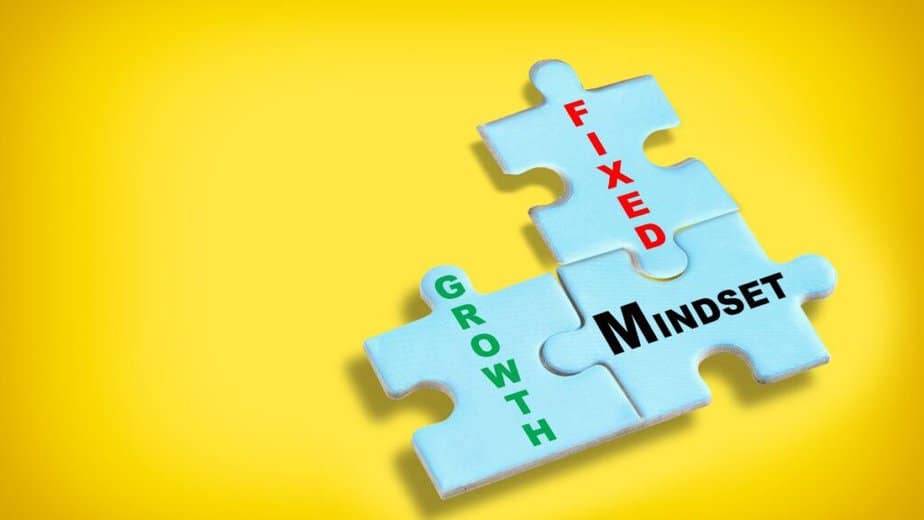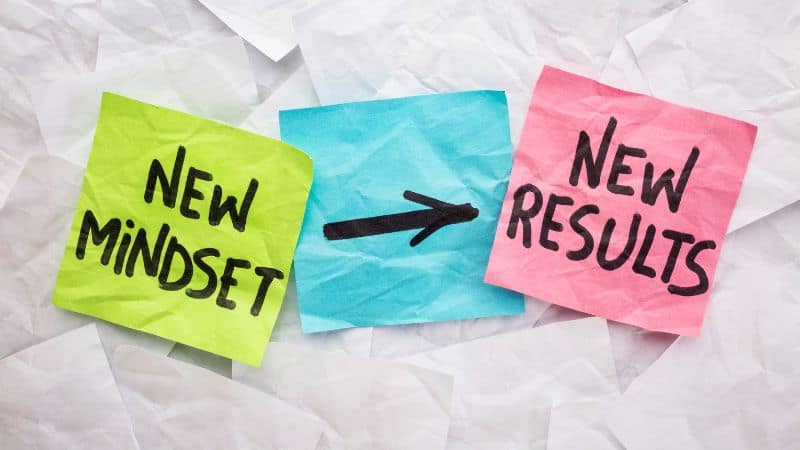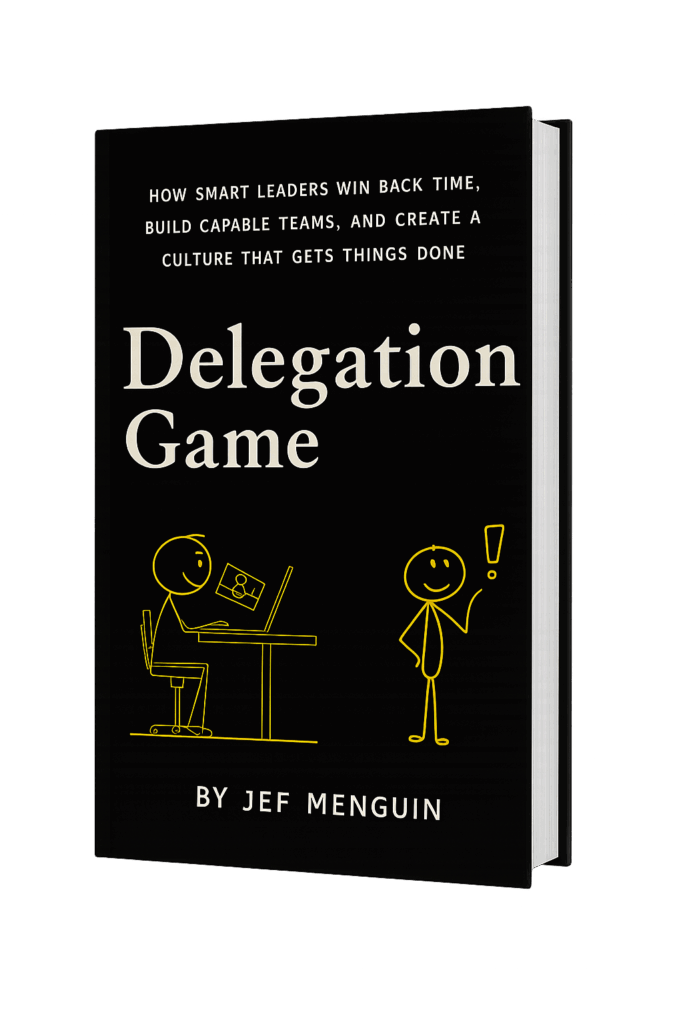Growth Mindset versus Fixed Mindset: know the difference to get what you want. Most people still don’t know the difference between a growth mindset and a fixed mindset. They live their lives based on a fixed program. The fixed mindset programming begins at home and is solidified in schools. And we bring it into the workplace too.
That’s the bad news. The good news is that we can break through it and embrace a growth mindset. It is a good thing that we have examples from breakthrough leaders.
Breakthrough leaders embraced a growth mindset. Because of a growth mindset, they are not afraid to initiate change, take risks, experiment, and make mistakes. They find ways.
🚀 Great leaders don’t just happen—they’re built, trained, and tested. Our leadership program gives you the blueprint to build the leader within. Ready to get started?”
I was told not to go beyond the limits.
When I was eight, someone told me to stop reading books. My cousins had old textbooks. So I borrowed and read them at night using a kerosene lamp. (During Marcos’s time, most in the neighborhood did not have electricity.)
“You will go crazy if you keep reading books.”
I didn’t understand it then. But as I grew up, I learned that people go crazy when they try to learn something beyond their limits.
And where I grew up, people understood they had limits.
Poor people will always be poor unless they get lucky. And rich people will always be rich because they are meant to be rich.
When I was young, there were movies of poor people who became rich. And it was all because they eventually discovered they were born to wealthy parents.
Cinderella came to mind. She was lucky to have Fairy Godmother. Without her, she would be unlucky for the rest of her life.

Who is Carol Dweck?
Carol Dweck introduced the terms growth mindset and fixed mindset. Before her evidence-based definitions, people have been talking about the same thing for centuries.
But her research affirmed what is known and this knowledge created breakthroughs in education, business, technology, and many areas of our lives. I am grateful.
I recommend that we embrace a growth mindset and re-examine the beliefs that limit us.
What I want is to define each term and provide you with examples of each mindset. Then, I will show you how to replace a fixed mindset with a growth mindset.
Let’s examine our mindset.
Our mindset can be our prison. But, it can also be our superpower. Our mindset shapes how we make sense of the world and our leadership.
Our mindset influences how we think, feel, and behave in specific situations.
For example, someone who believes he is born to hold the power of leadership because of his race can become a Hitler or a Donald Trump. These two leaders are not alike, but they somewhat think alike.
Both Gandhi and Mandela believed that we are equal and we should all care for each other. They have strong wills. Politicians mocked them because they were like Don Quixote, who fought windmills. Their mindset shapes their leadership.
They were the paragons of leaders who made breakthroughs.
Let’s proceed to discuss each. I will begin with the default channel: fixed mindset.
A Fixed Mindset Limits
A fixed mindset is a belief that one’s qualities, traits, and abilities are predetermined and cannot be significantly changed. People with a fixed mindset tend to avoid challenges, feel threatened by the success of others, and give up quickly in the face of obstacles.
They believe that their intelligence, talents, and personality are fixed and have limited potential for growth and development.
They may also fear failure, seeing it as evidence of their inherent limitations rather than an opportunity for learning and improvement.
When I was teaching, I saw how a fixed mindset limited students’ potential.
Examples of Fixed Mindset in Schools
I can tell you how difficult it is when students have a fixed mindset. But it is more difficult to educate children when teachers have a fixed mindset.
Fixed Mindset Among Teachers
Here are some symptoms of a fixed mindset among teachers:
Teachers with a fixed mindset may refrain from adopting new teaching methods, technologies, or practices, believing the traditional techniques they learned are the only effective teaching method.
They avoid challenging students or assignments and opt to focus on tasks that are easily completed or that have been completed before.
Teachers with a fixed mindset may avoid or only accept positive feedback, viewing critical feedback as a threat to their self-esteem or abilities.
They blame their students for lack of progress or achievement rather than examining their teaching methods or improvement areas.
Teachers with a fixed mindset may believe that intelligence is fixed and that some students cannot succeed. This can lead to lower expectations for some students and may result in lower achievement.
They may compare students to each other rather than viewing each student as an individual with unique strengths and challenges. This can lead to labeling and stereotyping of students and may result in lower expectations and less individualized instruction.
By recognizing these symptoms of a fixed mindset, teachers can work towards developing a growth mindset and adopting more effective teaching practices.
A teacher can pass on a fixed mindset to students. However, a fixed mindset is likely learned from home first.
Did you have the following way of thinking when you were a student?
Fixed Mindset Among Students
Here are some symptoms of a fixed mindset among students:
They are afraid to take risks or try new things, fearing that they will not succeed and that failure will confirm their limitations.
They give up easily when faced with challenges or obstacles, feeling that their abilities are predetermined and cannot be significantly improved.
They avoid challenges or opt for easier assignments, preferring to stick with what they know they can do well.
They dislike putting in effort or working hard, feeling that it is pointless since their abilities are predetermined and cannot be improved.
They are defensive when receiving feedback or criticism, feeling that it confirms their limitations and shortcomings.
They show limited interest in learning new things or taking on new challenges, feeling that their abilities and knowledge are predetermined and need to be significantly improved.
Students with a fixed mindset may constantly compare themselves to their peers, feeling that factors outside their control determine their success or failure.
Often, students are labeled bobo or tamad. Probably. But I bet my ten pesos that it is most likely because of a fixed mindset.
Notice that the students fixed mindset almost mirrors that of their teachers. This mindset is everywhere. And sometimes, our very own education perpetuates it.
Let’s see how this mindset prevents many professions from growing.
Examples of a Fixed Mindset in the Workplace
Here are symptoms that may indicate that you have a fixed mindset at work:
You avoid challenges and prefer sticking with tasks you can complete successfully.
You resist change and feel threatened by new methods, practices, or technologies.
You feel defensive when receiving feedback or criticism and resist making changes or improvements based on the feedback.
You blame others for your mistakes or failures instead of taking responsibility for your actions.
You believe your abilities, traits, and qualities are predetermined and cannot be significantly changed or improved.
You fear failure and avoid taking risks or trying new things.
You feel threatened by the success of others and compare yourself to them constantly.
You see setbacks and obstacles as evidence of your inherent limitations rather than as opportunities for learning and growth.
You give up easily when faced with challenges or setbacks instead of persisting and trying different approaches.
You show limited interest in learning new skills or taking on new responsibilities and feel complacent with your current knowledge and expertise.
As I have mentioned, a fixed mindset is everywhere. And you may not know it, but most of us have our own fixed mindset about things.
Mediocrity and a fixed mindset are twins. Where one is, you can find the other.
Bad Effects of a Fixed Mindset
A fixed mindset can have several negative effects.
With a fixed mindset, you may believe your abilities and qualities are predetermined and unchangeable.
You may fear failure, as you can consider failure as a reflection of your inherent limitations. This fear can lead to a reluctance to take risks or try new things, limiting personal and professional growth.
You may see setbacks and failures as evidence of your limitations rather than as opportunities for learning and growth. This can reduce resilience and the ability to bounce back from adversity.
You may be less likely to think outside the box or develop innovative ideas. This can limit creativity and the ability to find new solutions to problems.
You may engage in negative self-talk, viewing yourself and your abilities negatively. This can lead to low self-esteem and reduced confidence.
You may be more likely to compare yourself to others, which can lead to feelings of jealousy or resentment. Comparing yourself to others may limit your ability to build positive relationships and work collaboratively.
A fixed mindset can limit personal and professional growth, reduce resilience, creativity, and confidence, and negatively impact relationships with others.
Developing a growth mindset can help individuals to overcome these limitations and achieve greater success and fulfillment.

A Growth Mindset Creates
One mindset I encourage Filipinos to keep is that of a growth mindset. This mindset is not new to us.
Kapag Gusto May Paraan
My Lolo Pedro explains it very well.
Kapag gusto may paraaan. Kapag ayaw may dahilan.
Lolo Pedro
Either you find ways or your make excuses.
Someone with a growth mindset believes that we can grow our intelligence. We can learn new strategies and skills to become breakthrough leaders.
Though not all of us can become President of the Philippines in our lifetime, we all have the opportunity to make a significant difference.
What is a growth mindset?
A growth mindset is a belief or attitude that intelligence, abilities, and talents can be developed through dedication, hard work, and continuous learning. People with a growth mindset view challenges, failures, and obstacles as opportunities to learn and grow, rather than as indications of their limitations or fixed abilities.
Developing a growth mindset may help you become resilient and motivated. It gives you the courage to achieve in various areas of your life.
A growth mindset can make you more creative, solve problems, and adapt to change. I daresay that those who possess a growth mindset are more likely to create breakthroughs in their lives because they are “unreasonable”.
An unreasonable man is a person who does not believe the limits impose on him by others.
What are the benefits of a growth mindset?
We already know the disadvantages of a fixed mindset. And these advantages are fruits of limited thinking.
A growth mindset has several advantages and benefits that can positively impact our behavior, goals, and overall outlook on life.
Allow me to share five of these benefits.
With a growth mindset, people are more resilient in facing challenges and setbacks. They view failures and obstacles as opportunities to learn and improve rather than as indicators of their limitations or fixed abilities.
A resilient person can help individuals bounce back from difficult situations and progress toward their goals.
People with a growth mindset are more open to learning and trying new things. They develop intelligence and abilities through dedication and hard work. As a result, they are more willing to take risks, embrace challenges, and seek opportunities to learn and grow.
Individuals with a growth mindset are more likely to be motivated and persistent in pursuing their goals. They desire to learn, improve, and create limitless opportunities for themselves.
They don’t allow fear of failure or validation from others to determine their actions.
They tend to have healthier and more positive relationships. They are more open to feedback, willing to listen to others, and able to handle conflicts constructively. They also tend to be more supportive of others’ growth and development.
And they are more likely to think creatively and develop new ideas. Again, this is because fixed beliefs or assumptions do not limit them, and they are more willing to take risks and explore new possibilities.
Having a growth mindset can lead to a more positive and fulfilling life. It can help individuals overcome obstacles, achieve their goals, and cultivate meaningful relationships with others.
Examples of Growth Mindset in Schools
Since I mentioned examples of a fixed mindset in schools, I like to give you examples of how teachers behave when they possess a growth mindset.
Teachers with a growth mindset believe that their students can develop intelligence and abilities through dedication and hard work.
These teachers are committed to fostering their students’ love of learning and growth.
Here are some examples of how teachers with a growth mindset demonstrate their belief in the potential of their students:
Encouraging Effort. Teachers with a growth mindset praise their students’ efforts and hard work rather than just their achievements. They recognize that students who work hard and persevere are more likely to learn and succeed in the long run.
For example, a teacher might say, “I’m impressed with how hard you worked on that assignment. You put in a lot of effort, which shows in your progress.”
Embracing Mistakes. Teachers with a growth mindset recognize that making mistakes is essential to the learning process. They encourage their students to take risks and try new things, even if it means making mistakes.
For example, a teacher might say, “It’s okay to make mistakes. That’s how we learn and grow. Let’s see how we can improve on this next time.”
Providing Feedback: Teachers with a growth mindset provide constructive feedback that helps their students learn and improve. They focus on specific areas where their students can grow rather than simply pointing out what they did wrong.
For example, a teacher might say, “You did a great job on this assignment, but let’s work on improving your organization and structure for the next one.”
Fostering Collaboration: Teachers with a growth mindset believe collaboration and teamwork can lead to more significant learning and growth. They encourage their students to work together and share ideas, and they provide opportunities for group projects and activities.
For example, a teacher might say, “Let’s work on this project together and see how we can learn from each other’s strengths and ideas.”
Modeling Growth Mindset: Teachers with a growth mindset model the attitudes and behaviors they want to see in their students. They are open to feedback, willing to take risks, and always seeking to learn and improve.
For example, a teacher might say, “I’m still learning too. Let’s figure this out together and see how we can grow and improve.”
These five examples are also applicable to leaders. A manager, supervisor, or team leader with a growth mindset encourages effort, embraces mistakes as a learning opportunity, provides feedback, fosters collaboration, and models the way.











